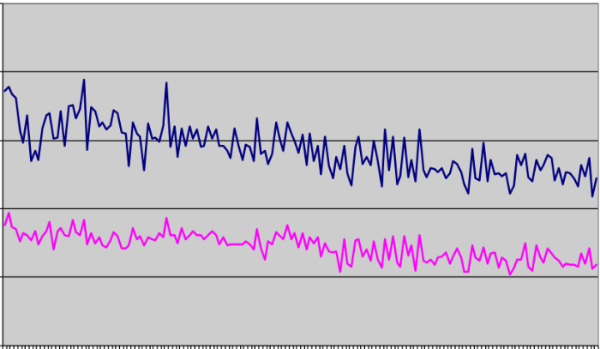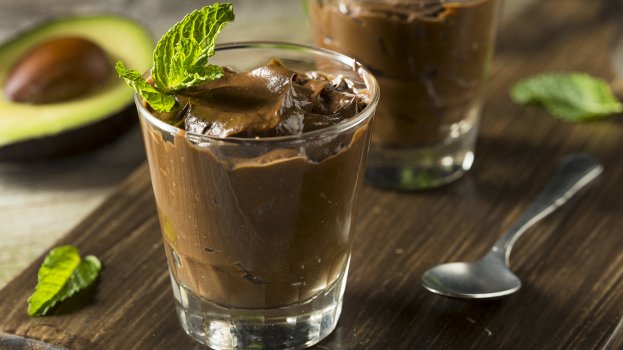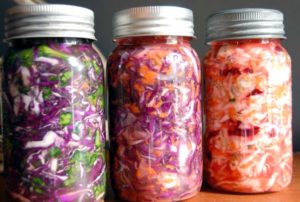If you take antacids, anti-depressants, statins, diabetic or high blood pressure medication did you know there are foods and nutrients that work better? It sounds almost unbelievable, but the chances are even your doctor doesn’t know about them.

High blood pressure
High blood pressure medication is designed to lower your blood pressure and the best drugs achieve about a 10 point lowering. Some people are given more that one drug to achieve a bigger effect but these drugs come with considerable side-effects and much less impressive evidence than you’d think for actually reducing cardiovascular deaths. Diuretics, for example, knock out B12 which increases dementia risk, and magnesium, which ironically increases heart attack risk. You want your blood pressure below 140/90 and ideally around 120/80.
You can achieve the same or an even better reduction in blood pressure with a vitamin, a mineral and a diet change.
The most effective vitamin for lowering blood pressure is vitamin C. A meta-analysis of 29 trials confirms that a mere 500mg of vitamin C a day lowers high blood pressure by 5 points in eight weeks. This study, published in the American Journal of Clinical Nutrition, confirms this important effect of vitamin C. However, higher doses are even better. In one study, those given 2 grams of vitamin C a day for 30 days had a 10 point drop in systolic blood pressure. This is comparable to the effect you can get with hypertensive drugs, but without the side-effects. I take 2 grams of vitamin C every day.
In fact, the only side-effects are positive. Vitamin C has been shown to lower LDL cholesterol and reduce arterial thickening. It is also an anti-inflammatory and may help, together with vitamin E, to stop the oxidation, or damage, of cholesterol. A recent study of almost 60,000 people in Japan reports that vitamin C intake is strongly associated with a reduced risk of heart disease, especially in women, cutting risk by a third. Another reports that vitamin C, with vitamin E, slows down atherosclerosis. Many diet studies also find that the higher your dietary intake of vitamin C the lower your risk. So, it’s an obvious choice for anyone with cardiovascular disease.
Magnesium has a direct and immediate blood-pressure lowering effect comparable to medication. This is because the muscle cells lining your arteries relax when they contain more magnesium than calcium. You can achieve this in two ways. By increasing your intake of magnesium or blocking the ability of calcium to get into cells. Calcium channel blockers are one of the most commonly prescribed hypertensive drugs but they have side-effects. Long-term risk more than doubles risk for breast cancer, according to a study in the American Medical Association’s journal, Internal Medicine.
In contrast, supplementing 300mg of magnesium a day produces an average drop in systolic blood pressure of 18.7 points, and in diastolic blood pressure of 11 points, if taken for six months, in people with raised blood pressure (above 155). This finding was reported in a meta-analysis of seven studies of 135 people with high blood pressure and is a highly significant change, more so than you would expect from the best drugs. Magnesium also helps lower cholesterol and triglycerides (blood fats) and is consistently associated with reduced risk of cardiovascular deaths and heart attacks. It also relieves insomnia, muscle tension and helps stabilise blood sugar levels.
Very few multivitamins contain anything like enough magnesium. My Optimum Nutrition Formula is relatively high in magnesium, providing 155mg in two tablets, but even that is not enough. So you’ll need to supplement extra magnesium to achieve 300mg a day. Be careful to check the ‘elemental’ magnesium in the supplement. A supplement might say magnesium chelate 300mg, but only 10% of the supplement is magnesium, so the elemental magnesium would be 30mg. This is written in the small print. Magnesium ascorbate is a good choice because the carrier, vitamin C, also lowers high blood pressure. Pumpkin seeds and greens are the best dietary sources of magnesium.
The diet that lowers blood pressure most effectively is a low GL diet. This is because learning to eat in a way that stabilises your blood sugar levels means your body makes less insulin. Insulin affects the kidneys in a way that increases blood pressure. Here’s an example of what happened to Phil’s blood pressure, measured daily, following my low GL diet.

As you can see both his systolic and diastolic blood pressure completely normalised in five months. I explain how to eat in this way in my Low GL Diet Bible but you might want to read Say No to Heart Disease as this also explains other ways to lower blood pressure naturally. A low GL diet is consistently associated with reducing risk of heart attack and cardiovascular deaths.
High cholesterol
Cholesterol-lowering statin medication is prescribed to millions of people but, unless you’ve actually had heart disease, there is no good evidence that taking them is going to reduce your risk of cardiovascular death or extend your lifespan. However, one in ten get side-effects and one in 50 get diabetes as a result. There are two kinds of cholesterol – LDL, the so-called ‘bad’ kind that you want to lower, and HDL, the good kind that can remove unwanted or damaged cholesterol from your arteries.
Increasing the proportion of your cholesterol that is HDL is the most important way to reduce your risk of a heart attack. You want one third of your total cholesterol to be HDL. You might be surprised to find that taking niacin (B3), a simple B vitamin, is the most effective way to raise HDL cholesterol levels. According to a recent review in the New England Journal of Medicine, niacin increases levels of it by 20 to 35 per cent.
Niacin also lowers LDL cholesterol by up to 25 per cent. One of the authors of this study was cardiology expert Roger Blumenthal, an associate professor and director of the Ciccarone Center for the Prevention of Heart Disease at The Johns Hopkins University School of Medicine and its Heart Institute in Baltimore, Maryland. Statins, by comparison, only raise HDL by between 2 and 15 per cent. Niacin also lowers triglycerides (blood fats) by up to 28%.
You need at least 1,000mg of niacin to get a cholesterol lowering effect. There is a side-effect at this dose – you blush, go red, hot and itchy for about 15 minutes. It’s not dangerous but some people don’t like it. If you take pure niacin 500mg, always with food, twice a day, the blushing effect quickly subsides after a few days. Some people prefer to take non-flushing niacin, containing inositol hexanicotinate. This should work but there isn’t the same published evidence that exists for pure niacin to say that this is proven. Some formulas also contain magnesium and vitamin C – three positive nutrients in one.
Combined with a low GL Mediterranean style diet and enough omega 3 fish oils the results are even better. Eating only one serving of oily fish a week cuts your likelihood of having another heart attack by a third. A Japanese study gave over 9,000 people the omega-3 fat called EPA (1.8g a day) with statins and compared that with 9,000 people receiving only statins. After 4.5 years, those taking the fish oils had 19 per cent less incidence of cardiac death, heart attacks or other serious cardiovascular problems.
Andrew is a case in point. When he had his cholesterol measured it was 8.8. He was put on statins and, six months later, it was 8.7. He was also gaining weight, feeling tired and stressed, and not sleeping well. With help, Andrew changed his diet and started taking supplements of niacin and omega 3. Three weeks later, he had lost 10 pounds his energy levels were great, he no longer felt stressed and he was sleeping much better. And his cholesterol level had dropped to a healthy 4.9!
Diabetes
Diabetic medication usually hinges on the drug metformin. It works by improving insulin sensitivity, which means the body can normalise blood sugar more effectively. It is not a bad drug. Lowering insulin has many benefits, including reducing cancer risk. But metformin also lowers B12 levels, and that could increase dementia risk. It is very important to monitor your B12 level, perhaps with a homocysteine test, if you are on metformin.
Yet a mineral, a spice and a diet change are much more effective than metformin, but without any of the risks.
The mineral is chromium which is actually essential for the insulin receptor to work properly. Supplementing 600mcg a day (three 200mcg chromium pills, one with each meal) has consistently been shown to stabilise blood sugar and reverse insulin resistance in people with diabetes. A systematic review in the top diabetes journal Diabetes Care, concludes: “Among participants with type 2 diabetes, chromium supplementation improved glycosylated hemoglobin levels and fasting glucose. Chromium supplementation significantly improved glycemia in patients with diabetes.” In some studies those given 400mcg or more of chromium produce five times more reduction in blood sugar than metformin, and no side-effects. The toxic level of chromium is 10,000mcg.
Half a teaspoon of cinnamon a day also significantly reduces blood sugar levels in diabetics, and is also great news for non-diabetics who have blood sugar problems but are unaware of it, the most common symptom of which is chronic tiredness and energy slumps or feeling faint. In one study all diabetics responded to the cinnamon within weeks, with blood sugar levels 20 per cent lower on average than those of a control group. Some of the volunteers taking cinnamon achieved normal blood sugar levels. You need quite a lot of cinnamon for this kind of effect – 3 to 6 grams, which is a half or whole teaspoon. The active ingredient, called MCHP, is ten times more concentrated in a cinnamon extract called Cinnulin so supplementing 300-600mg has the same effect. Combining chromium with Cinnulin is particularly effective so look for supplements that provide both.
The single most effective natural treatment for diabetes is a low GL diet. I explain exactly how to do this if you’ve got either type-1 or type-2 diabetes in my book Say No to Diabetes. Combining this with chromium and cinnamon is more effective than any drug.
Linda, who had suffered with diabetes for a decade, is a case in point. Within six weeks on a low ‘glycemic load’ (low GL) diet including cinnamon plus chromium, her diabetes was gone. “My blood sugar level used to be high, between 11-18 mmol. It’s now between 4 – 8. The optimum is 7 so my blood sugar is well under control. The other thing is the energy. I was permanently tired. I could have spent the whole day in bed. Now my energy level is incredible. I would recommend this diet to everybody. It is so much easier than I thought. This is literally the answer to my prayers.” In fact, she had to reduce her medication because she was getting hypos – low blood sugar. She had been taking Amaryl, a sulphonylurea drug, plus Metformin. Once her blood sugar had normalised, she was able to stop her Amaryl. Six months later, eating low GL has become part of her life, she’s lost 35lb (16kg), her blood sugar has remained stable and she no longer gets sugar lows. Her doctor has kept her on Metformin, but even this may not be necessary.
Indigestion
Antacid medication prescriptions have gone through the roof, with 57 million prescriptions in the UK last year. An estimated one in five people have digestive problems. The most commonly prescribed are proton-pump inhibitors (PPI drugs usually end in ‘azole’) that block the production of stomach acid. While these can provide relief to those with acid indigestion and heartburn they come with horrendous short and long-term side-effects. Many people feel bad on these drugs, but the real risk is long-term. Without enough stomach acid you can’t absorb enough B12, and without B12 risk for dementia increases exponentially.
Instead, doctors should prescribe digestive enzymes to people with digestive problems. It is an obvious first step and it works. In one study those people given digestive enzymes reduced their indigestion symptoms by 90% compared to those given placebos, who decreased their indigestion rating by 22%.
Another effective treatment is probiotics. Supplementing two strains of beneficial bacteria, Lactobacillus Acidophilus and Bifidobacteria, has very positive effects on digestion. They have been shown to help constipation, diarrhoea and irritable bowel syndrome, reducing bloating. Some supplements combine digestive enzymes with beneficial bacteria. Also helpful is glutamine, an amino acid that nourishes the cells that make up the intestinal tract.
However, even these won't work if you continue to eat foods you are intolerant to. Many people are unknowingly intolerant to frequently eaten foods such as wheat, milk and yeast. These cause an inflammatory reaction in the stomach that can lead to indigestion and heartburn. In a study of five thousand people who had had a food intolerance test from yorktest.com and avoided suspect foods, 80 per cent noticed a definite improvement to their digestive symptoms.
Combining a food-intolerant-free diet with the right digestive support supplements is at least as effective as drugs, but without the side-effects.
Depression
Anti-depressants are not that effective compared with placebos. ‘The magnitude of benefit of medication compared with placebo . . .may be minimal or nonexistent, on average, in patients with mild or moderate symptoms.’ Concludes a study of six large studies in the Journal of the American Medical Association. Even in severe depression they tend to only improve depression ratings by about 15% compared to placebos. The most commonly prescribed ‘SSRI’ anti-depressants are said to work by raising serotonin levels. The trouble is they have a long list of side-effects, including increasing the risk of suicide, and are hard to get off without appalling withdrawal effects.
An amino acid, an essential fat and a simple diet change work better, but without any side-effects or withdrawal problems.
Serotonin is made from a naturally occurring amino acid called 5-hydroxy-Tryptophan, or 5-HTP for short. There have been eleven placebo controlled trials of 5-HTP that showed at least as good, if not better effects in depression. A recent comparison study between 5-HTP and an SSRI showed comparable results, but less side-effects for 5-HTP. You need between 100mg and 300mg a day and the only side-effect reported by a small number of users is nausea. If so, just lower the dose. It usually subsides in a couple of days.
The next no-brainer nutrient is omega 3 fish oils. The most comprehensive review and meta-analysis of 19 trials on patients with mild and major depression ‘concludes that ‘the use of omega-3 fats is effective’ both in patients with major depressive disorder and milder depression’.
The greater the amount of EPA, not DHA, the more effective was the treatment likely to be. Most effective studies give 1,000mg of EPA. The lowest dose was 300mg combined EPA/DHA which is what I supplement every day.
The best diet for improving mood is a low GL Mediterranean style diet, with plenty of oily fish. Stabilising your blood sugar improves mood and the mineral supplement chromium can also help relieve depression especially in those who crave carbs and feel sleepy or groggy a lot of the time.
If you are on medication or suffer from chronic ailments my book, Food Is Better Medicine Than Drugs, co-authored with Jerome Burne, is a must read. It gives you non-drug alternatives to different health problems such as these.
But what do doctors think of all this? We sent our book to Dr Michael Dixon, Chairman of the NHS Alliance for his review: “It is packed with useful and original information for patients with various long term diseases or those who are simply seeking to live a healthier life. It is extremely practical, a crusade against ignorance, and enables patients to remove their straightjackets and take a new approach to improving health.” Our original intention was that doctors read this book to give their patients non-drug alternatives. However, there is nothing to stop you helping yourself.
Source:
https://www.patrickholford.com/advice/nutrients-that-work-better-than-drugs?utm_medium=email&utm_source=transactional&utm_campaign=PH+Nutrients+Better+1.a+09.06.2015


